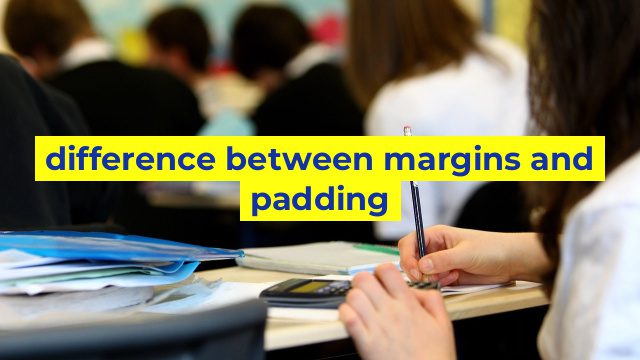The Difference Between Margins and Padding: Explained
If you have a website or are interested in website design, you’ve probably heard of the terms “margins” and “padding”. Both have a significant role in web design and can often be confusing for newcomers. In this article, we will discuss the primary differences between margins and padding, and how they can affect your website’s appearance and functionality.
What is Padding?
Padding refers to the space between the content and the border of an HTML element. In other words, padding is the cushioning within the element. If you want to add space between your content and the border of your HTML element, you would use padding. Padding can be added to all four sides of an element, or individually.
Padding is usually used to:
– Add white space around content
– Increase readability
– Enhance the element’s aesthetics
– Provide ample breathing room for users to interact with elements
What is Margins?
Margins, on the other hand, refer to the space between an HTML element and surrounding elements. In other words, margins are the spaces outside of the element. If you want to add space between an HTML element and other elements on the page, you would use margins. Margins are used to create space between HTML elements.
Margins are usually used to:
– Create separation between elements
– Establish a neat layout of elements
– Add space between two different elements
– Provide a clear and clean look for the website
What are the Main Differences?
The primary difference between margins and padding lies in their scope of functionality. Margins are used to create and maintain space between HTML elements on the page. They affect the positioning of elements on the page, and the space around the elements.
Padding, on the other hand, is used to create and maintain space within an HTML element. Padding only affects the spacing between the content and the border of an element, it does not affect the surrounding elements.
Another important difference is that margins are transparent, meaning that the background can be seen through them. Whereas, padding is non-transparent, meaning that the background of the element is not visible through the padding.
Conclusion
In conclusion, margins and padding are two key terms in web design that must be understood to create visually appealing and functional websites. Margins affect the space between elements, while padding affects the space within an element. Though both play a significant role in the layout of a website page, they have fundamental differences that should be understood carefully for efficient use. By mastering these two terms, you can use them intelligently and create a visually appealing, user-friendly website.
Table difference between margins and padding
| Margin | Padding |
|---|---|
| Defines the space outside the border of an element | Defines the space between the content and the border of an element |
| Margins can be set separately for each side (top, right, bottom, and left) of an element | Padding can be set separately for each side (top, right, bottom, and left) of an element |
| Margins can collapse, which means that the largest margin value between adjacent elements will be used | Paddings will not collapse, meaning that the sum of padding values will be used in the total size of an element |
| Margins can be negative, which allows an element to overlap another element | Paddings cannot be negative |
